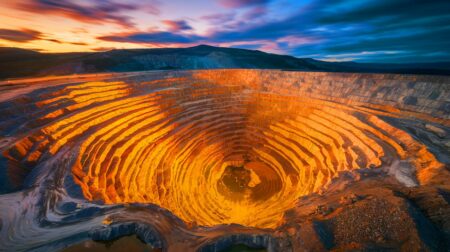Few people really notice cement, and most of the time that means the material is doing its job. You can walk to a lunch spot in center city, cycle safely over bridges, and live and work in buildings surrounded by it without ever having to think about it.
That’s not the case for material scientists who know too well that cement production is responsible for high greenhouse gas emissions – and demand for cement will only continue to rise. That’s why the industry is rolling out a new plan to cut its global carbon dioxide emissions by 24 percent in 2050, and set a course for keeping its impact well below the 2°C threshold of warming temperatures.
“Like every energy and CO2-intensive sector, the global cement industry is at a crossroads. Either our sector will succeed in the definition and faster implementation of greenhouse gas mitigation roadmaps,” said Bernard Mathieu, director of the World Cement Association climate program, “or we could soon face more aggressive moves from investors, regulators and other stakeholders.”
Cement is the core ingredient in concrete, which has been used since ancient times and isn’t going away soon. Yet the cement sector is the third-largest industrial energy consumer in the world, responsible for 7 percent of the world’s industrial energy use, according to the International Energy Agency. It is second only to the steel industry in its carbon emissions, accounting for 6 to 7 percent of the planet’s CO2. Most of the carbon, at about two-thirds, comes from the decomposition of limestone used in its production.
At the same time, demand is on the rise with projected increases between 12 and 23 percent by 2050.
“In its current form, it is not compatible with the commitment taken at COP21 in Paris, and needs a significant change in business-as-usual practices to align to a 2-degrees trajectory,” warns the CDP, the London-based organization that helps companies report environmental impacts to their stakeholders. Their research released in April found only three of 13 of the world’s largest companies have emissions reduction plans that achieve a 2°C goal, even though the overwhelming majority of them boast plans.
The WCA knows it needs to change that. Its strategy for CO2 reductions rests on five pillars, beginning with transparency because the emissions tied to cement are notoriously hard to quantify, and companies and countries are inconsistent in their metrics and reporting.
They also plan to promote a quicker transition to low-carbon solutions.
“The ultimate objective must be to minimize the CO2 emissions over the life-cycle of buildings and infrastructure,” said Mathieu. The focus on kiln efficiency and waste management is now an accelerated priority, as are innovation and evolving business models – and there’s much optimism in the R&D. New cement mixtures, better carbon capture options and innovative technology solutions provide options.
Among them is a technique developed by CarbonCure in Canada, which is adding recycled CO2 into the concrete itself. The injection method permanently sequesters the carbon, while the CO2 hardens into a mineral form that strengthens the concrete product. Other options include new materials that can alter or potentially replace the commonly used Portland cement altogether.
The WCA will hold its annual general assembly in London in December, and the cement industry is expected to unveil its full CO2 emissions reduction plan then.
https://www.youtube.com/watch?v=tuae5LQ8VU8
https://vimeo.com/129245747#at=3
Did you like it? 4.6/5 (20)








